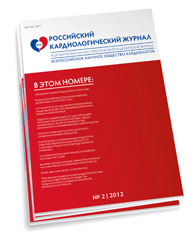NAFLD may be linked to heart failure
In a cross-sectional analysis, researchers found that nonalcoholic fatty liver disease was independently associated with subclinical myocardial remodeling and dysfunction, which may indicate an association with heart failure.
“There are several well-established major risk factors for the development of clinical heart failure, including coronary artery disease, diabetes and hypertension, all of which are also closely associated with NAFLD,” Lisa B. VanWagner, MD, MSc, of Northwestern University Feinberg School of Medicine, told Healio.com/Hepatology. “We demonstrate, taking into account a comprehensive set of well-measured metabolic covariates, that NAFLD is in fact associated with subclinical myocardial remodeling and dysfunction independent of metabolic risk factors.”
Lisa B. VanWagner
To determine this association, VanWagner and colleagues analyzed data of 2,713 patients from the Coronary Artery Risk Development in Young Adults (CARDIA) study, a community-based, longitudinal study of the development and determinants of cardiovascular disease in black and white adults. All patients underwent computed tomography quantification of liver fat and comprehensive echocardiography with myocardial strain measured by speckle tracking. The subclinical left ventricular (LV) systolic dysfunction was defined using values of absolute peak global longitudinal strain (GLS), according to the research. Of the patients included, 58.8% were women, 48% black and the prevalence of NAFLD was 10% (n = 271).
Results indicated that patients with NAFLD had lower early diastolic relaxation (e’) velocity compared with the patients without NAFLD (10.8 ± 2.6 vs. 11.9 ± 2.8 cm/s), as well as higher LV filling pressure (E/e’ ratio: 7.7 ± 2.6 vs. 7 ± 2.3) and worse absolute GLS (14.2 ± 2.4% vs. 15.2 ± 2.4%) compared with patients without NAFLD (P < .0001 for all). Cardiac output was also higher in NAFLD patients. However, this was “attenuated after accounting for body surface area,” according to the research.
After adjusting for heart failure (HF) risk factors or BMI, analysis showed that NAFLD was still associated with subclinical myocardial remodeling and dysfunction (P < .01).
“These results imply that identification of NAFLD may help to identify those at increased risk for future development of clinical heart failure, and provide pathophysiologic insight into the development of HF, particularly [heart failure and preserved ejection fraction] by showing, for the first time, that liver fat is associated with abnormalities in myocardial mechanics,” VanWagner said. – by Melinda Stevens
Source: www.bing.com






